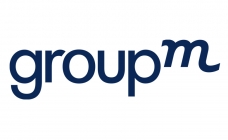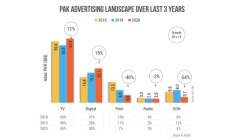‘Direct concerted efforts to build & promote OOH audience metrics’
By Rajiv Raghunath - November 08, 2021
Experts underlined the criticality of developing robust audience measurement metrics for propelling OOH growth in Asian markets, while addressing the Asia Forum of World Out of Home Organization (WOO)

The session on ‘Asia – OOH Value in Audience Metrics’, moderated by Gideon Adey, CEO, Gurooh, in the Asia Forum of World Out of Home Organization (WOO) held on October 28, provided an overview of the state and progress of OOH audience research and development of audience metrics in several key markets of Asia.
Addressing the session, Rachana Lokhande, Consultant with Indian Outdoor Advertising Association (IOAA), said audience metrics development is at a nascent stage in the Indian market, although most specialist agencies have developed their own tools for audience research. A few tech companies have also entered the fray, offering audience data using mobile data, mobile SDK data or bitstream data. Most of these tools have been developed for specific client requirements, and do not cover all OOH formats, namely, DOOH, transit media, etc. The inputs are largely relating to static assets.
IOAA is studying the audience metrics adopted in other countries, and is also evaluating the proposals of various independent research and data companies to have them as partners in developing the metrics. IOAA is looking at getting audience data sourced from multiple sources lie mobile data, traffic data, etc. The prospective partner companies would also have to have a ground level understanding of the OOH assets and the underlying issues. They would need to provide a dashboard for the metrics and a verification model for the metrics and for the campaign.
Rachana stated that in defining the scope of audience research and development of metrics,
IOAA has taken into account the needs of myriad small operators who are doing business, the overall impact of Covid on business, the speed of implementation, and scalable the audience research is.
Jim Liu, CEO, BNR Communications, said that although OOH has grown in scale in China, there is no industry-recognised audience metrics in the country.
Audience data in China is derived from:
- Big internet platforms like e-commerce like Alibaba
- Search engines like Baidoo
- Maps
The second source is from media monitoring companies. Data accumulated by those companies is quite considerable.
The third type is from individual data source. For instance, an increasing number of transportation companies are launching their own apps, that also yield much audience data.
Frank Vidal, Asia Pacific Director, Adcity said that when it comes to audience research and data, South-East Asia has its own challenges across different regions. There are as yet no set of metrics available in the region that is comparable with OOH metrics being used in the US, the UK, or Australia. “Southeast Asia is very fragmented. Each territory has its own challenges, its own regulations, its own limitations. Frank said that the industry got interested in audience data when “Moving Walls brought original measurement methodology around 3-4 years ago. We at Havas work with their solutions to assess audience performance for OOH DOOH campaigns. They tap into different data sets, such as device IDs, GPS or social listening”. The tools help in assessing the reach of campaigns.
Jun Sakurai, CEO, LiveBoard said the COVID 19 pandemic has accelerated the demand for higher accountability of OOH media in Japan, by both advertisers and agencies. Toward meeting this expectation, the digital signage consortium industry body in Japan has taken the lead in firming up the first edition of audience measurement guidelines in March 2021.
The guidelines help determine impressions, reach and frequency and how to read data. He stated that some DOOH companies in Japan have explored the ways to provide screen traffic based data.
Angie Cutter, Founder & MD, TAC Media stated that some time back the Malaysian specialists association, along with the OOH Association put out an RFI for initiating OOH audience research but “it has quietened down and nothing has moved”. “We have initiated with top three vendors in Malaysia to establish a joint investment committee. We have spoken to Route in the UK, MOVE in Australia. And we are trying to see what we can do to create a joint industry committee, in order to bring more accountability to OOH”.
The committee would be focused on creating the 1) funding framework, 2) best practices to be adopted, and 3) other learning from across the world. “We are looking at an integrated view of audience across OOH and DOOH,” she said.
When asked “who benefits from great OOH numbers”, Jun stated emphatically that it is important to have standard audience metrics to the gain trust of advertisers. “Also, once advertisers and agencies recognise the research, it would become easier for media owners to sell their inventory to advertisers and agencies”. With metrics, it would be possible to have impressions and attributions for each single spot of ad delivery.
Angie said the need for an independent, trusted measurement of audiences is felt strongly in Malaysia as OOH is the second largest media in the country after digital media. “It is even bigger than radio, newspaper and magazine. So, bringing the gold standard best practice to audience measurement will be the only way to help outdoor grow”.
“In Malaysia we have 5G rolling out. We see a steady adoption of ATSC 3.0 video standards, etc. we can bring those to OOH,” said Angie.
Jim underlined that media owners, agencies, and clients alike will benefit from the adoption of OOH audience metrics.
Rachana said that lack of audience metrics is one key reason limiting OOH’s share of the ad spends to about 5% in the India market. Hence, OOH gets dropped from a plan when there is a budget cut and it “gets blamed if the overall KPI is not met”. Industry metrics is important because “the first thing that it will do is stop commoditisation of the media”.
She pointed out that a common currency will help the buyers to work on better strategies, and provide solution oriented OOH campaigns to their clients, rather than just waging the price war against one another. Media owners would also be able to pitch their assets based on metrics and “not just on size and price”.
With metrics, it would be possible to establish the relative importance of different media assets in a given media plan. Media owners would also be able to assess the value of each of their assets, and pitch them to buyers accordingly. Also, advertisers will be able to take the conversations beyond assets and locations, and view OOH as part of the entire media plan. “They would be able to see if OOH can add reach to a particular campaign”.
Frank said that while adoption of standard metrics is a challenge in highly fragmented markets, the benefits that metrics bring to advertisers, publishers and agencies is immeasurable. It would require the different industry bodies to forge a unified approach toward building the measurement systems.
The experts on the panel reinforced the critical need for OOH industry to step up the collective efforts to develop and promote audience research and metrics that in the longer run will have a huge beneficial impact on OOH/DOOH growth.

Stay on top of OOH media trends








